African Art Study Guide 1
1/47
There's no tags or description
Looks like no tags are added yet.
Name | Mastery | Learn | Test | Matching | Spaced |
|---|
No study sessions yet.
48 Terms
meaning “around” when referencing years or time
before common era, common era
Petroglyph
an image/carving made on the surface of rock
Relief Sculpture (Low Relief, High Relief)
a piece that has a protrusion out of the flat background, can be a high or low protrusion
multiple-colored object/piece
Stylized
to exaggerate or simplify the natural features of a piece
Terra-Cotta
baked clay or ceramic
Sculpture in the Round/Freestanding Sculpture
pieces that are carved to stand alone; three dimensional
Scarification
permanent artificial markings made on the body in a pattern, typically to indicate status or beauty
Lost-Wax Casting
process of making an object; a clay mold surrounds a wax model, wax melts away and the mold is filled with molten metal
Monolith
a single large block of stone
Rock-cut
carved from solid stone where it naturally occurs
a thinner liquid spread over objects’ surfaces as a protective measure
Oni
“king” in the Ile-Ife language
Benin
ancient african kingdom
a protruding bone farmed from certain animals, like elephants and rhinos, used to develop highly sought-after products
Embroidery
decorative stitching usually made with colored thread on woven textile
Fetish
a European term for a human-made substitute for God; used inaccurately to refer to objects related to African religious practices or beliefs
Fiber art
use of natural or synthetic fibers to create art objects
Pendant
an object that is meant to hang down
Amulet
an object specifically used to ward off spirits, used for protection
Register
a horizontal section of a work, usually a clearly defined band or line
Asante
An ethnic group native to Ghana
Scramble for Africa
separating the African continent into territories for European claim
Minkisi (nkisi singular)
any object invested with sacred energy, used for spiritual protection
Reliquary
objects associated with holy people or ancestors
Masquerades/masqueraders
the masks, choreography, music, costumes, lyrics, and performances involving transformations of humans
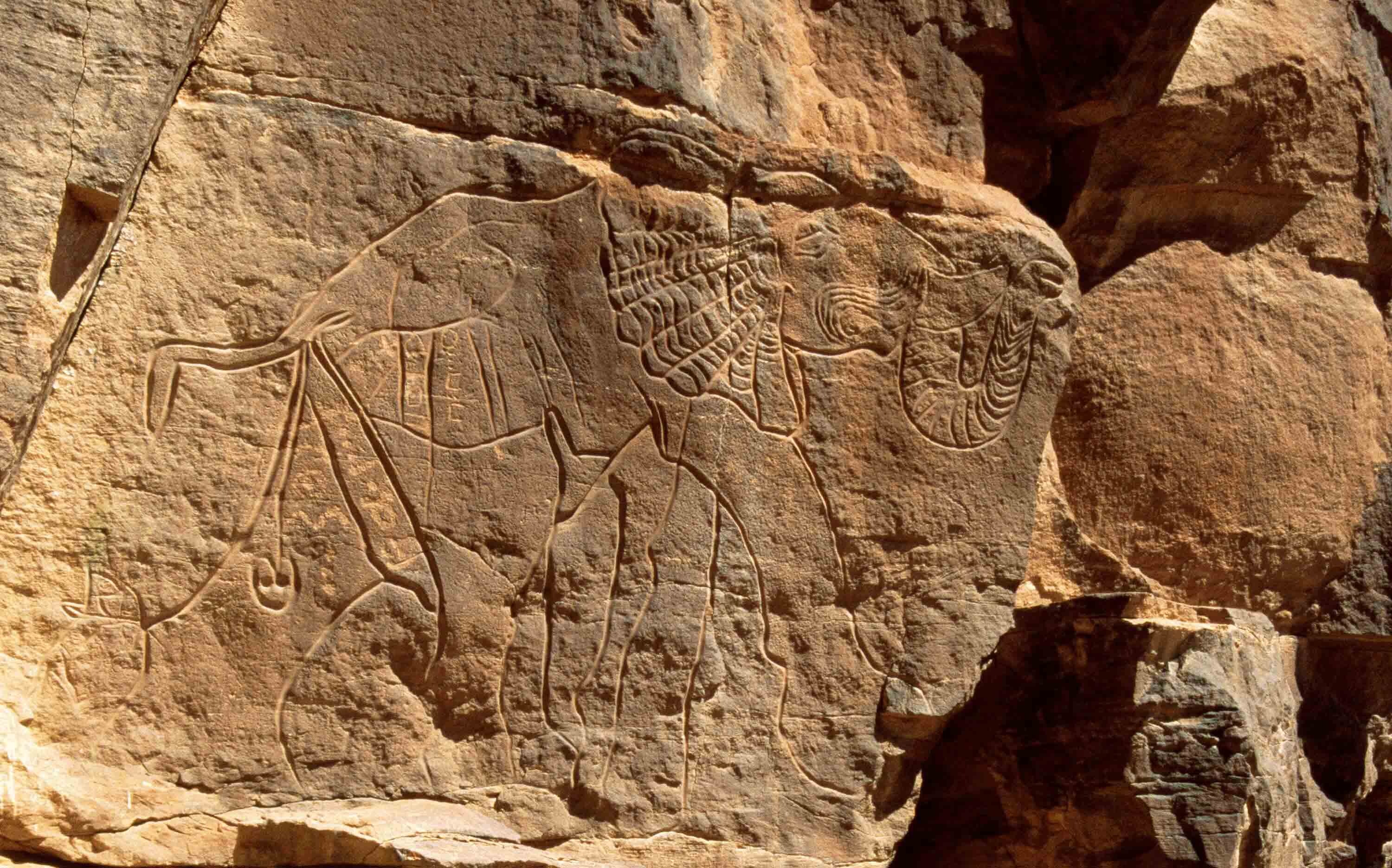
Large Wild Fauna Style Elephant Relief, Messak Settafet, Libya, c. 7,500 – 5,000 BCE ,stone tools on rock surface
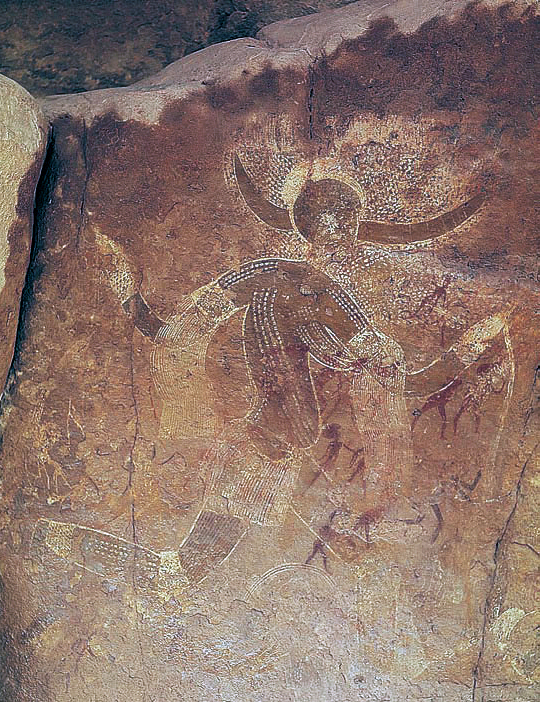
- Running Horned Woman, 6,500-6,000 BCE, pigment on rock, Tassili n’Ajjer, Algeria, pigment on rock
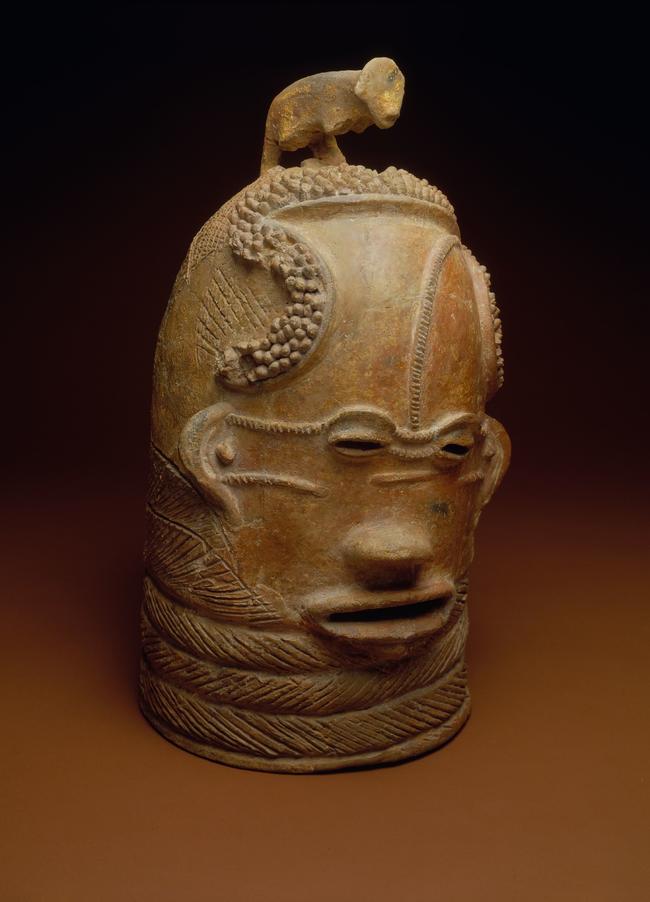
- Lydenburg head, Lydenburg, Mpumalanga region, South Africa, 500 – 800 CE, Fired clay
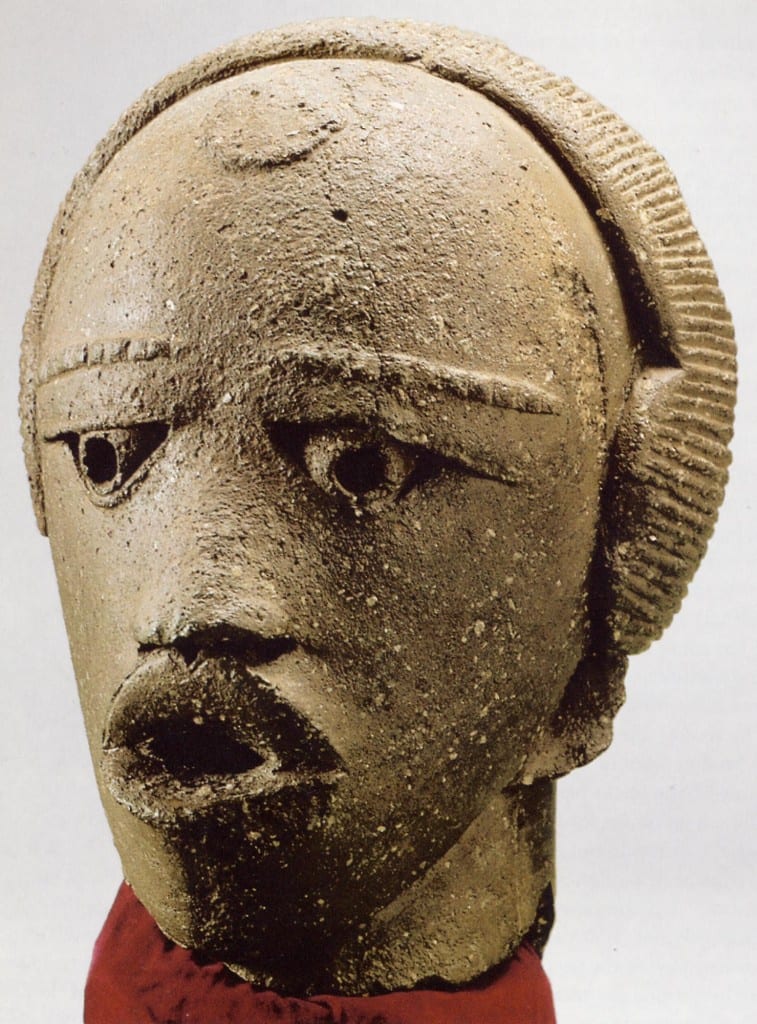
- Head Broken from a figure, Jemaa, Nigera, Nok Style, 700 – 400 BCE, Fired Clay
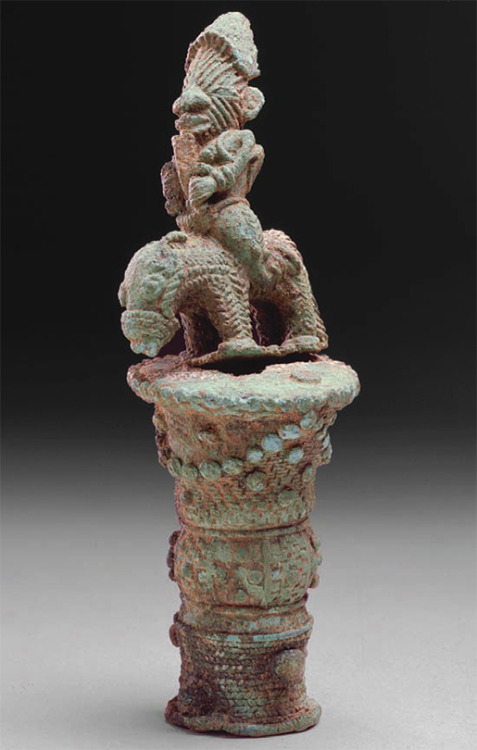
- Head of a flywhisk, or top to a staff, Igbo-Ukwu, Nigeria, c. 800-900 CE, copper alloy
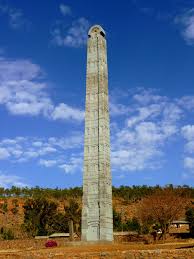
- Royal tomb monument, Aksum, Ethiopia, Kingdom of Aksum, 200-400, Solid Stone, 69ft. high
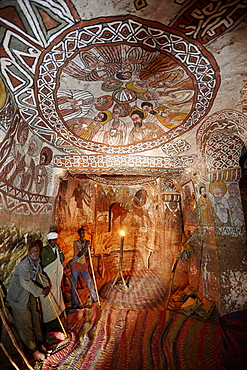
- Abuna Yemata Guh, Cliff Church, Tigray, Ethiopia, c. 500 – 1500
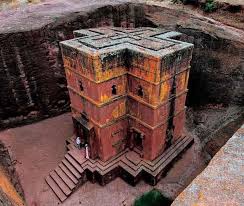
- Bete Giyorgis (Church of St. George), Lalibala, Ethiopia, c. 1200
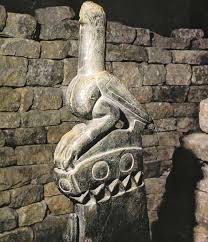
- Royal Emblem in the form of a fish eagle, Ancestral Shona, Zimbabwe, 1250-1400,
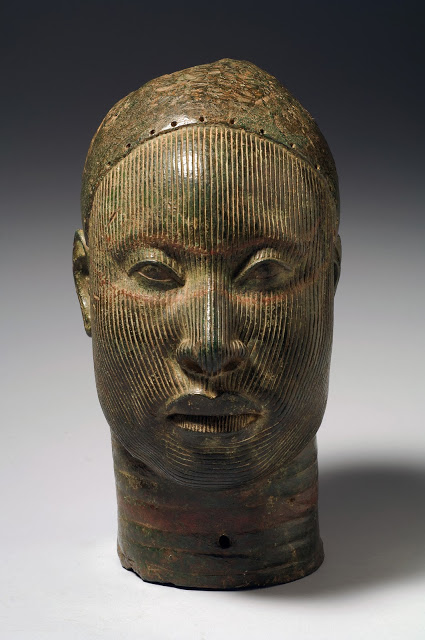
- Head from Wunmonije Compound, Ife, Nigeria, Ancestral Yoruba, 1250-1350, Copper
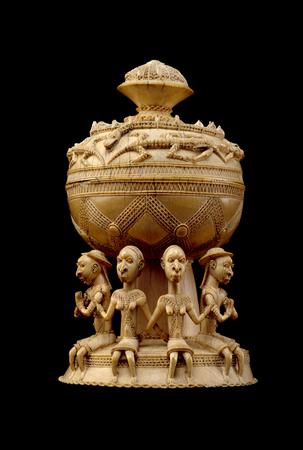
Salt cellar, Sapi-Portuguese, Sierra Leone, c. 1470-1550, ivory, height 13 ¼”
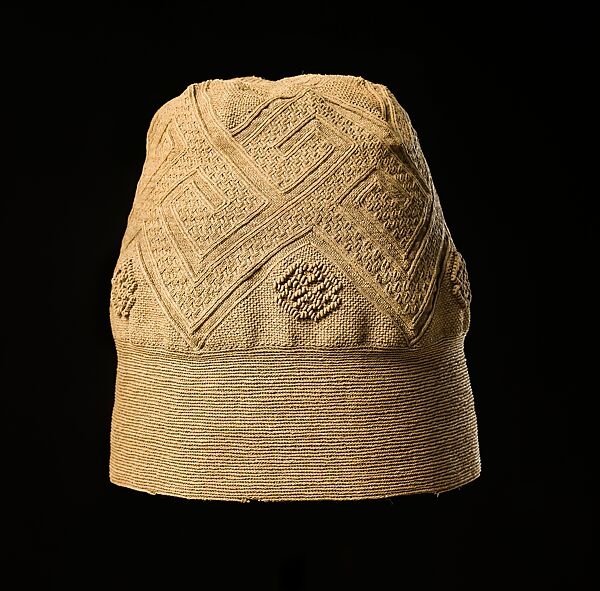
- Crown or cap (mpu) for a man of high rank, kingdom of Kongo, Angola, Democratic Republic of Congo, Republic of Congo, or Cabinda, before 1674, woven and
embroidered fiber from the raffia palm, diameter 5 7/8”
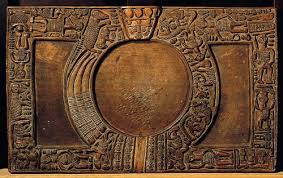
- Divination tray (opon ifa), Yoruba, before 1659, wood, height 21 ½”
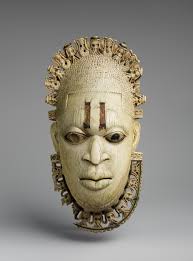
- Pendant portraying Queen Idia, the Iyoba, kingdom of Benin, sixteenth century, ivory,iron, copper (?), height 9 3/8”
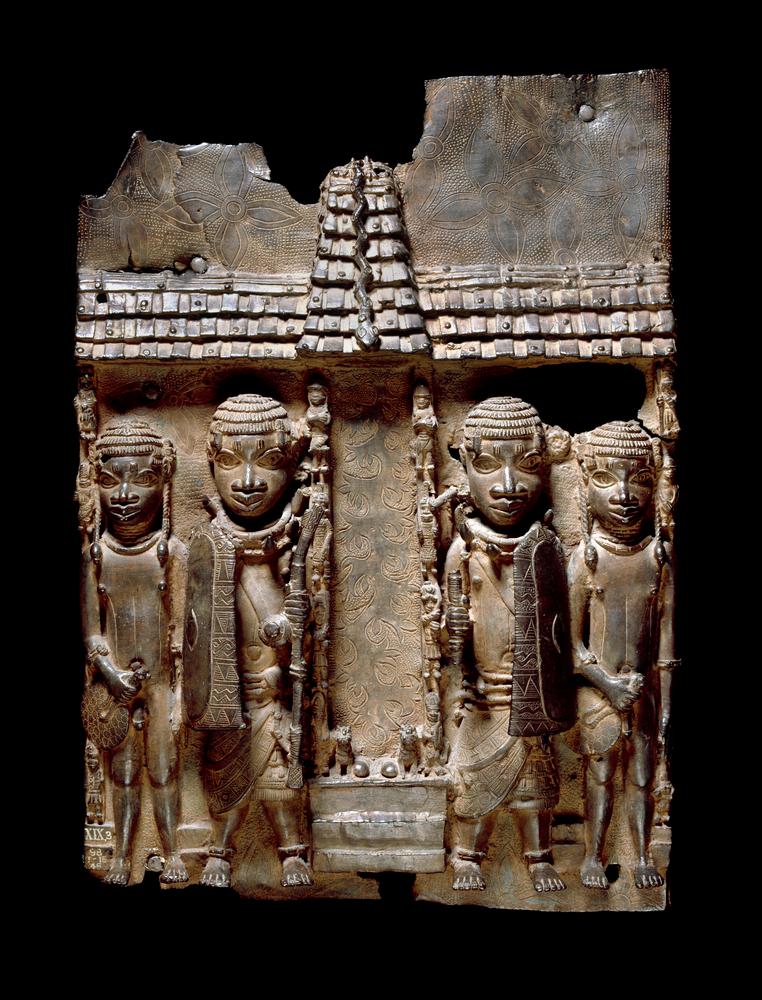
- Plaque depicting a palace shrine, kingdom of Benin, Benin City, Nigeria, c. 1520-1640,copper alloy, height 21 ½”
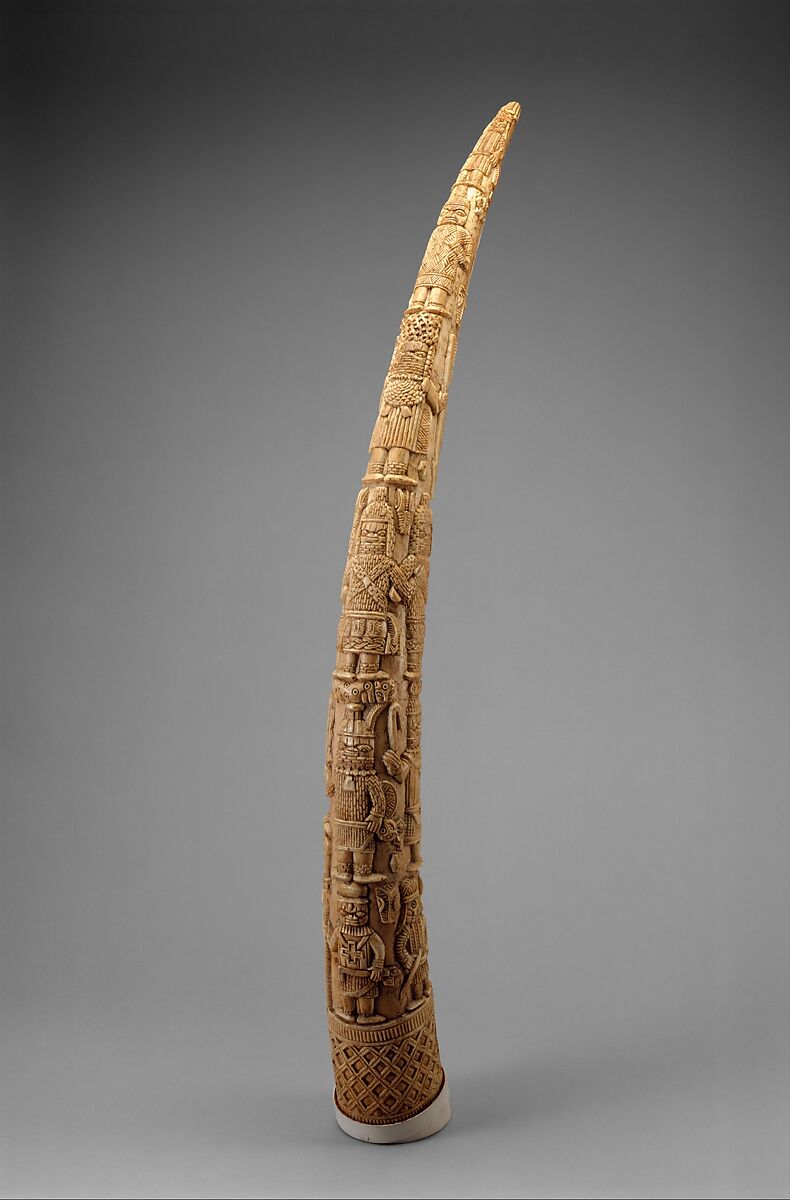
- Tusk for an ancestral altar, kingdom of Benin, Benin City, Nigeria, c. 1820, ivory,
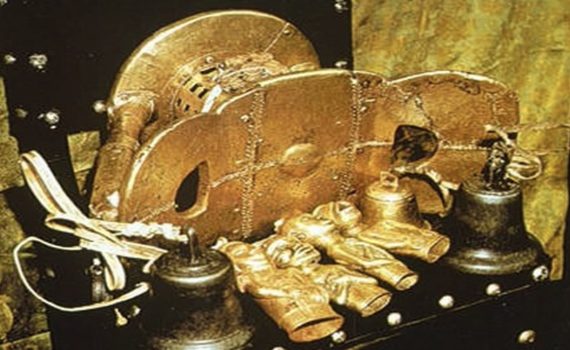
- Sika Dwa Kofi (Golden Throne), kingdom of Asante, Kumase, Ghana, 1700, gold
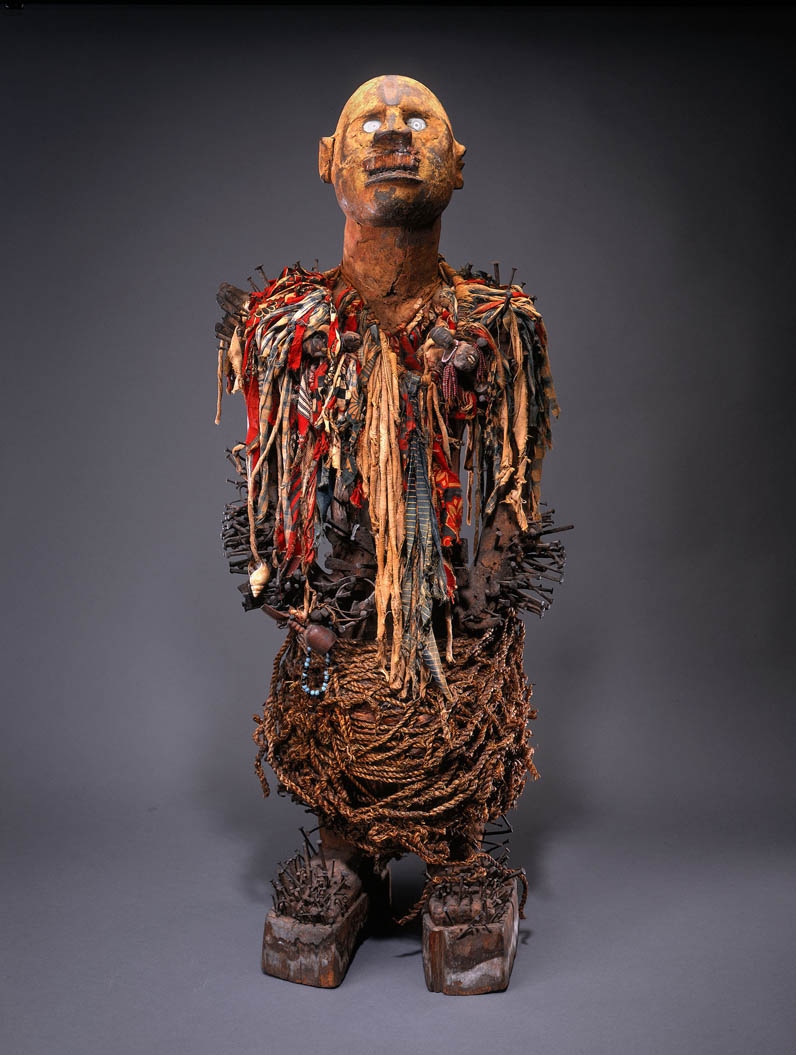
- Sculptor and religious specialists of the Yombe (Kongo), nkisi nkonde, before 1878. Wood, metal and organic material, 42” high
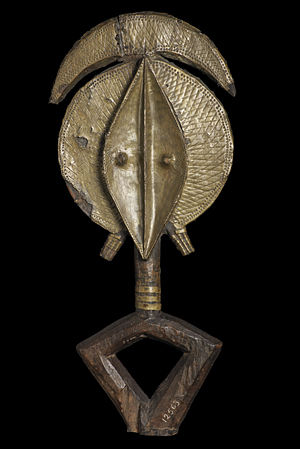
- Sculptor of the Mindumu (Kota), reliquary guardian, before 1880. Wood, brass, copper,
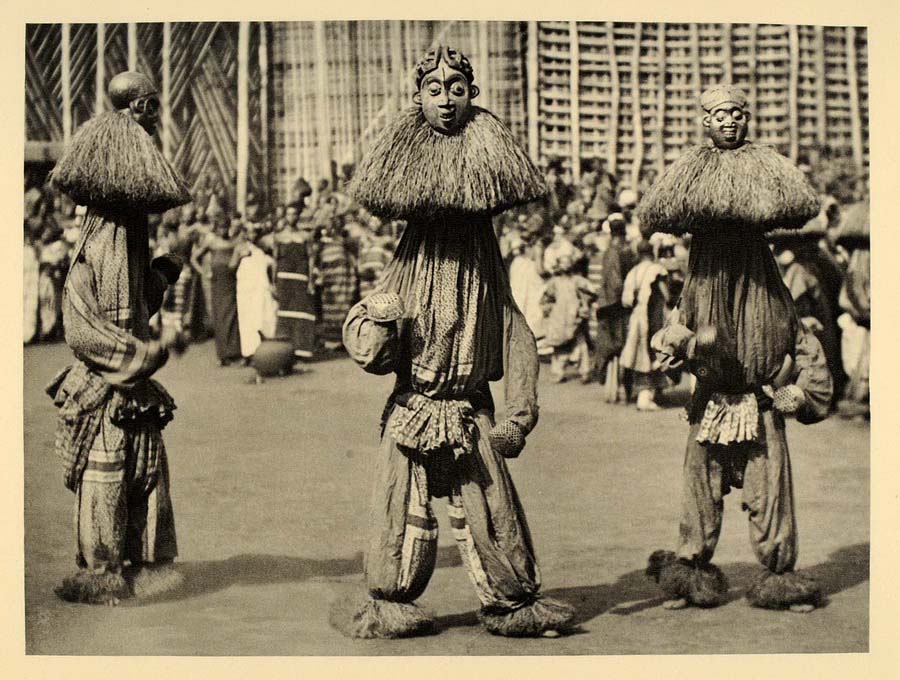
- Dancers performing within Njoya’s palace, kingdom of Bamun, masks and architecture in Cameroon Grasslands style, photograph c. 1912, Fumban, Cameroon
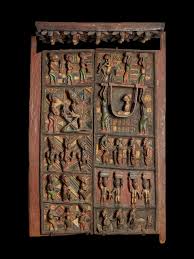
- Olowe of Ise, doors and lintel sculpted for the Ogoga of Ikere, Yoruba style, c. 1900, wood, pigment, 7’ 6 5/8” high